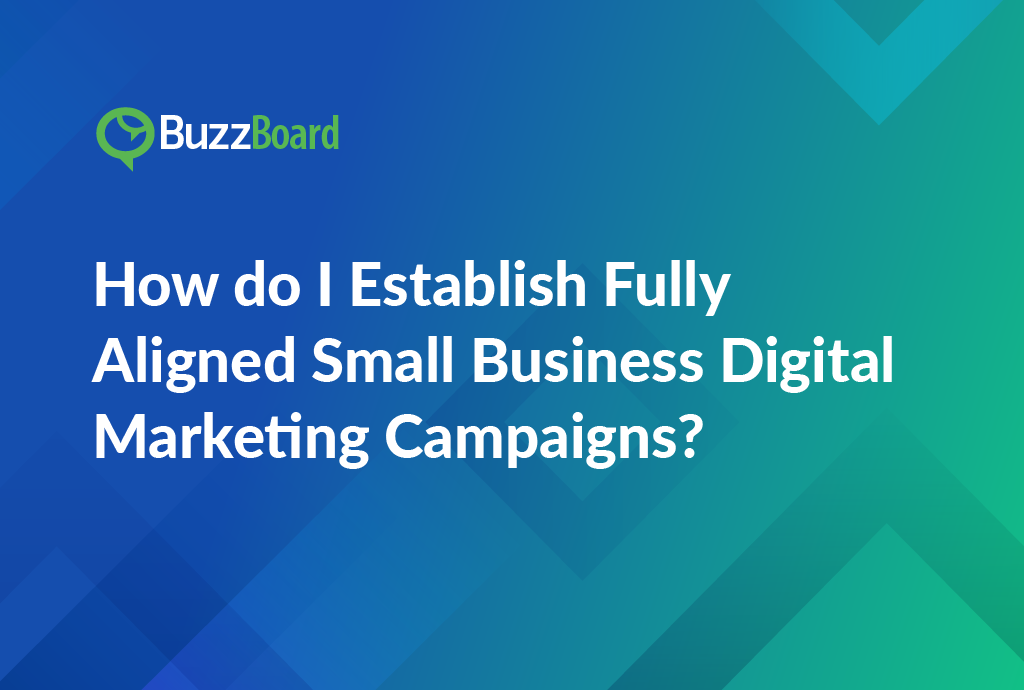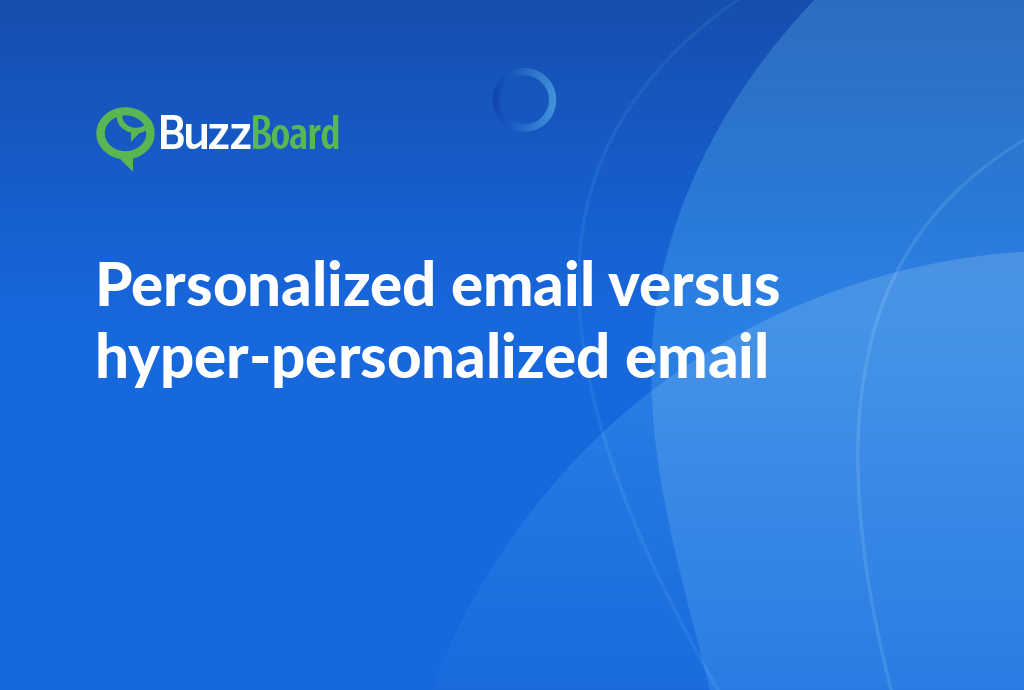To establish fully aligned small business digital marketing campaigns, start by defining your target audience, setting clear goals, and integrating your marketing channels. This includes creating a customer persona, identifying your unique selling proposition, and selecting the right marketing mix. Next, develop a content strategy that resonates with your audience, and measure your progress using key performance indicators. Finally, regularly review and adjust your campaigns to ensure they remain aligned with your business objectives.
The Significance of Fully Aligned Digital Marketing Campaigns
Aligning small business marketing with digital campaigns is a critical task for growth and visibility in today’s digital-centric marketplace. As more small businesses forge online paths, digital marketing strategies must be mindfully designed to effectively engage their target audiences. The principal aim should be to integrate broader business goals into smooth, cohesive digital campaigns.
Aligning small business marketing enables those businesses to direct their digital marketing efforts toward achieving their corporate objectives. It binds a company’s mission and vision to its digital initiatives, facilitating a unified marketing approach that expands brand message and reach.
The crux of successful digital marketing campaigns is understanding the target market and providing value to them through your products or services. When marketing efforts are deliberately aligned with business strategies, companies witness enhanced market penetration, elevated customer loyalty, and augmented profitability.
Aligning campaign goals usually requires careful planning and execution to balance business promotion and customer value. The integration should skillfully amalgamate a host of strategies, such as SEO, SEM, content marketing, social media advertising, and numerous other digital programs to create an all-encompassing, audience-focused campaign.
This collective action leads to a robust brand presence and authority online, driving business growth and success ultimately. Harnessing the power of aligned small business marketing is undeniably an investment yielding significant returns.
Identifying and Understanding the Objectives for Your Small Business’s Digital Marketing Campaigns
Identifying objectives for your small business’s digital marketing campaigns is a crucial step in developing a successful and effective strategy. To achieve this, it’s essential to have a clear understanding of your company’s goals and the analytical tools that support this vision. This involves not only defining what you want to achieve but also understanding how you will measure and track progress towards those goals.
When devising a strategic approach to digital marketing, it’s crucial to align campaign objectives with your overall business objectives. This ensures that all digital marketing efforts are focused on driving meaningful results and achieving the desired outcomes. By taking a holistic approach to digital marketing, you can create a cohesive and productive strategy that drives real value for your business.
One fundamental principle of well-synchronized small business marketing is integrating digital campaigns across platforms and formats. This involves leveraging a range of digital marketing tools and channels to promote your key objectives and reach your target audience. By grasping the subtleties of digital programs and their ability to promote your key objectives, you can use these tools to formulate a comprehensive and effective digital strategy.
Differentiating between varying types of digital marketing campaigns is also essential for success. From content marketing to search engine optimization, social media promotion to email marketing, each campaign type has unique strengths and appeals to diverse demographics. A comprehensive understanding of these campaign types, when aligned with your objectives, can offer all-inclusive coverage across your target audience.
For example, content marketing can be used to educate and engage your target audience, while search engine optimization (SEO) can help drive organic traffic to your website. Social media promotion can be used to build brand awareness and drive conversions, while email marketing can be used to nurture leads and drive sales. By understanding the strengths and weaknesses of each campaign type, you can create a diversified digital marketing strategy that reaches and engages your target audience across multiple channels.
In addition, it’s essential to consider the metrics and analytics that will be used to measure the success of each campaign. By tracking key performance indicators (KPIs) such as website traffic, engagement rates, conversion rates, and return on investment (ROI), you can gain valuable insights into the effectiveness of each campaign and make data-driven decisions to optimize and improve your digital marketing strategy.
Ultimately, a well-planned and executed digital marketing strategy can help small businesses achieve their goals and drive real results. By taking a comprehensive and integrated approach to digital marketing, you can create a cohesive and productive strategy that drives value for your business and helps you achieve your objectives.
How to Integrate and Align Your Digital Programs Within Your Small Business Marketing Strategy
For small businesses, integrating digital marketing efforts with a broader marketing strategy can seem like a daunting task. However, it is a crucial step in ensuring that digital marketing campaigns are effective, consistent, and aligned with overall business objectives. Understanding how to integrate these components is key to achieving success in the digital landscape.
To begin, it is essential to identify your overall business goals and objectives. A clear understanding of your desired outcomes can aid in defining and aligning your digital initiatives effectively. This involves setting specific, measurable, achievable, relevant, and time-bound (SMART) goals that are aligned with your business’s overall mission and vision. For example, if your business goal is to increase sales, your digital marketing goal might be to drive a certain number of conversions through your website or social media channels.
Once you have a clear understanding of your business goals, it is essential to consider your target audience. Who are they? What connects with them? What are their pain points, needs, and desires? Tailoring your digital programs to resonate with your audience is critical to achieving success. This may require changes in your messaging, targeting specific demographics, or creating content that speaks to their interests and needs. For instance, if your target audience is millennials, you may need to focus on creating content that is visually appealing, engaging, and easily consumable on mobile devices.
Another crucial aspect of integrating digital marketing with a broader marketing strategy is to ensure that your digital campaigns are not isolated from each other. Instead, they should form part of an integrated digital campaign that includes various digital platforms, such as social media, email marketing, content marketing, and search engine optimization (SEO). When these elements complement each other, they create a unified, effective marketing machine working towards a mutual goal.
For example, your social media campaign may drive traffic to your website, which can then be converted into leads through email marketing. Meanwhile, your content marketing efforts may generate buzz and drive engagement, which can then be amplified through paid advertising. By integrating these digital platforms, you can create a cohesive and effective marketing strategy that drives results.
In addition to integrating digital platforms, it is also essential to leverage technology to track and measure the success of your digital campaigns. Tools like Google Analytics offer insights into customer behaviors and campaign performance, allowing you to make data-driven decisions that further improve and align your campaigns. By tracking key performance indicators (KPIs) such as website traffic, conversion rates, and engagement metrics, you can refine your digital marketing strategy and optimize your campaigns for better results.
Finally, it is essential to remember that aligning campaign objectives with a small business marketing strategy is not a one-off task. It mandates constant refining and improvement. As your business and audience change, so should your digital marketing efforts. This may involve adjusting your messaging, targeting, or content strategy to stay relevant and effective.
Integrating digital marketing with a broader marketing strategy is a crucial step for small businesses looking to achieve success in the digital landscape. By identifying your business goals and objectives, understanding your target audience, integrating digital platforms, leveraging technology to track and measure success, and constantly refining and improving your strategy, you can create a cohesive and effective marketing machine that drives results.
Examples of Successfully Aligned Small Business Digital Marketing Campaigns
In the digital marketing arena, small businesses are often perceived as underdogs. However, many have successfully shattered this perception by implementing fully aligned digital marketing strategies. The term ‘aligned small business marketing’ typically refers to a digital campaign where all marketing activities are intertwined, aimed at achieving collective objectives.
Consider, for instance, the digital marketing campaign by a local boutique. Via a blend of influencer marketing, social media promotions, and email marketing, they orchestrated a holiday-centric campaign. The results were impressive, with a sizable increase in sales and customer awareness. The alignment of campaign objectives across various channels proved highly effective.
Another instance of success is a local eatery which conducted an integrated digital campaign to boost foot traffic. By synchronizing their digital efforts—which encompassed localized SEO, pay-per-click advertising, and a focused social media campaign—they effectively augmented their digital presence and visibility, leading more customers to their doorstep.
These examples underline the power of aligning campaign objectives within small business digital marketing strategies. It enables these businesses to concentrate their resources, capitalize on their strengths, and communicate their message to the right audience consistently and effectively.
The Challenges and Benefits of Establishing a Fully Aligned Small Business Digital Marketing Campaign
Creating an integrated small business digital marketing campaign is a complex and multifaceted endeavor that requires careful planning, strategic execution, and ongoing optimization. Understanding the challenges and benefits of launching such campaigns is crucial for achieving sales success and staying competitive in today’s digital landscape.
One of the most significant obstacles to overcome is aligning campaign objectives with business goals. Small businesses often have diverse objectives, ranging from enhancing online visibility to boosting sales, increasing brand awareness, or driving website conversions. Each of these goals requires a unique marketing strategy, making it challenging to create a one-size-fits-all digital program. Moreover, small businesses often have limited resources, which necessitates finding a balance between marketing objectives and cost-effectiveness.
To overcome these challenges, it’s essential to develop a clear understanding of the target audience, their needs, and preferences. This involves conducting thorough market research, analyzing competitors, and identifying areas of opportunity. By doing so, small businesses can create a tailored marketing strategy that resonates with their audience and drives meaningful engagement.
Another significant challenge is integrating various marketing channels and tactics into a cohesive campaign. This includes aligning social media, email marketing, content marketing, search engine optimization (SEO), pay-per-click (PPC) advertising, and other digital marketing efforts under a single umbrella. This requires careful planning, coordination, and execution to ensure that all marketing activities are working together seamlessly to achieve the desired outcomes.
Despite these challenges, the benefits of an integrated small business digital marketing campaign far outweigh the obstacles. A cohesive approach allows small businesses to establish a unified online presence, creating a consistent brand image that resonates with their audience across multiple channels. This, in turn, drives more impactful engagements, increases brand loyalty, and fosters a stronger connection with customers.
Furthermore, an integrated digital marketing strategy can significantly enhance the efficiency of customer acquisition efforts. By targeting the right audience with the right message at the right time, small businesses can increase conversions, reduce costs, and improve return on investment (ROI). This is particularly important for small businesses with limited resources, as it enables them to maximize their marketing budget and achieve greater results.
In addition to these benefits, an integrated digital marketing campaign can also provide valuable insights and data to inform future marketing decisions. By tracking website analytics, social media metrics, and other key performance indicators (KPIs), small businesses can identify areas of improvement, optimize their marketing strategy, and make data-driven decisions to drive growth and success.
In conclusion, creating an integrated small business digital marketing campaign is a complex and challenging process, but the benefits are too valuable to overlook. By understanding the challenges, aligning campaign objectives with business goals, and integrating various marketing channels and tactics, small businesses can establish a unified online presence, drive meaningful engagement, and achieve greater sales success. So, how will you align your small business digital marketing efforts to achieve greater success in today’s competitive digital landscape?









